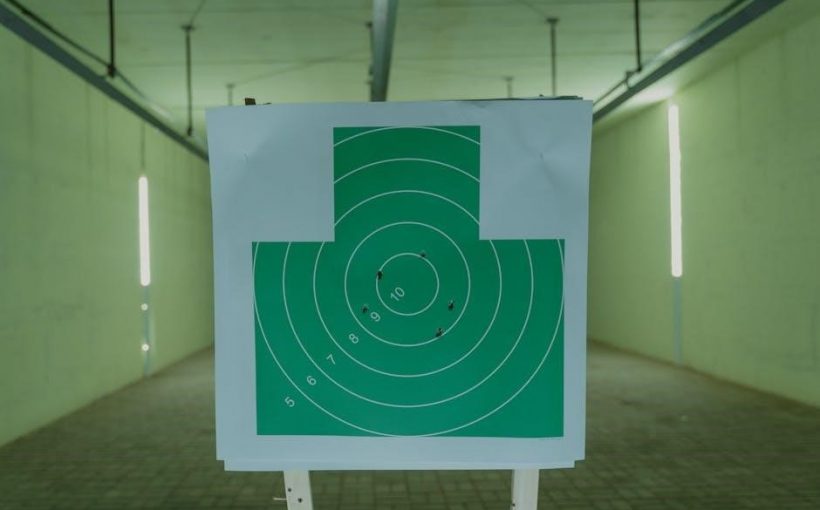Warm-Up and Stretching Routine
Begin with 5-10 light swings to loosen your muscles. Perform dynamic stretches, focusing on shoulders, arms, and hips. Gradually transition into hitting wedges to warm up your swing.
Dynamic Stretching Exercises
Dynamic stretching is essential to prepare your body for golf. Start with arm circles, shoulder rolls, and torso twists to increase blood flow and flexibility. Leg swings and hip rotations help loosen lower body muscles. Transition into light swings with a club to mimic golf movements, focusing on rhythm and balance. These exercises improve range of motion, reduce injury risk, and enhance swing mechanics. Keep movements controlled and gradual, avoiding bounces or force. Finish with slow, exaggerated swings to transition into hitting balls smoothly.
Importance of a Structured Practice Plan
A structured plan ensures focused practice, preventing mindless shots. It keeps sessions goal-oriented, helping you address specific techniques and track progress for consistent improvement and better performance.
Benefits of a Planned Session
A structured practice plan enhances efficiency by focusing on specific skills, ensuring each session has clear goals. It helps maintain concentration, preventing aimless practice. By targeting areas like technique, accuracy, and mental focus, you track progress effectively. A planned session also promotes consistency, as repeating drills builds muscle memory. Additionally, it allows for adaptability, adjusting drills based on performance and time constraints. This organized approach ensures every moment at the range contributes to improvement, making practice more productive and enjoyable. It also helps simulate real-course conditions, preparing you for actual gameplay scenarios.

Setting Specific Goals for Each Session
Identify areas needing improvement and set clear, achievable objectives. Focus on specific techniques, such as ball flight or alignment, to guide your practice and track progress effectively.
Identifying Areas for Improvement
Technical Drills for Skill Development
Implement drills like the 9-Shot Drill to enhance ball striking and precision. Focus on improving wrist mechanics, clubface control, and swing consistency through targeted exercises and repetitive practice.
The 9-Shot Drill
The 9-Shot Drill is a structured exercise to enhance ball-striking consistency and precision. Hit three shots focusing on a neutral swing, three aiming for a slight draw, and three for a fade. This drill helps identify and correct swing flaws, improving shot-making versatility. By repeating the sequence, you develop muscle memory and confidence in your ability to shape shots. Regular practice of this drill ensures consistent performance and better control over ball flight, making it an essential part of a driving range practice plan.
Target Practice for Accuracy
Aim for specific targets like flags or distance markers to improve accuracy and control, simulating real-course conditions and enhancing focus during practice sessions.
Hitting to Specific Targets
Aim for specific targets like flags, markers, or designated zones to enhance accuracy and control. This practice simulates real-course conditions, helping you develop focus and precision. Start by selecting a target at a moderate distance, then gradually increase the challenge by choosing farther or smaller targets. Track your progress by noting how many shots land within your desired zone. Adjust your stance, grip, or swing as needed to improve consistency. Incorporating target practice into your routine will help you build confidence and translate range success to the course.

Mental Game and Focus Training
Practice visualization techniques and controlled breathing to maintain focus. Set small mental goals for each session, such as staying calm under pressure or committing fully to each shot.
Strategies for Staying Focused
Maintaining mental focus during practice is crucial for improvement. Use visualization techniques to imagine successful shots and outcomes. Practice controlled breathing to stay calm and composed. Set specific, achievable goals for each session, such as improving accuracy or consistency. Eliminate distractions by minimizing phone use and staying present. Incorporate pre-shot routines to maintain concentration and ensure each swing has purpose. Track progress by setting benchmarks and celebrating small victories. These strategies help build mental discipline, leading to better performance and a more productive practice session.
Customizing Your Practice Plan
Assess your skills and goals to tailor sessions. Adjust time, drills, and focus areas based on progress and specific needs. Adapt as your game evolves.
Adjusting for Time Constraints
To maximize efficiency, tailor your practice plan based on available time. For shorter sessions (10-30 minutes), focus on specific skills like wedge play or alignment drills. Prioritize drills that address your weakest areas, ensuring each session has clear goals. Break down your practice into segments: warm-up, technical work, and target practice. Even with limited time, structured sessions can lead to consistent improvement. Adjust drills and focus areas to maintain engagement and prevent burnout, ensuring every minute contributes to your progress. Time constraints shouldn’t hinder your growth; smart planning makes every session productive.
Incorporating Feedback and Tracking Progress
Use video analysis to review your swing and identify flaws. Track progress by logging scores and swing improvements. Adjust your plan based on feedback to optimize results.
Using Video Analysis
Video analysis is a powerful tool to enhance your practice. Record your swing and review it to identify technical flaws, such as poor wrist angles or improper alignment. Focus on specific areas like ball flight patterns or swing mechanics. Use apps or software to compare your swing with professional golfers. Regularly tracking your progress helps refine your technique. Additionally, tools like HackMotion provide real-time wrist angle data, optimizing your swing consistency. By reviewing and adjusting based on video feedback, you can make targeted improvements and accelerate your skill development effectively.
Cool Down and Recovery Routine
Finish your session with static stretches for major muscle groups, focusing on shoulders, arms, and lower back. Perform gentle swings without hitting balls to gradually slow your heart rate. Conclude with deep breathing exercises to relax and prevent muscle soreness.
Post-Practice Stretching
After your practice session, dedicate 5-10 minutes to static stretches for your shoulders, arms, and lower back. Focus on holding each stretch for 20-30 seconds to maximize flexibility. Incorporate gentle, controlled movements to release tension in your muscles. Perform light, swings without hitting balls to gradually slow your heart rate and transition into a relaxed state. Conclude with deep breathing exercises to promote recovery and reduce muscle soreness. Proper post-practice stretching helps prevent injuries and ensures your body is prepared for future sessions.

Additional Tips for Effective Practice
Alternate clubs during practice to maintain focus and prevent repetitive strain. This varied approach keeps your session engaging and ensures well-rounded skill development.
Alternating Clubs During Practice
Switching between different clubs during practice helps maintain focus and prevents repetitive strain. This approach keeps sessions engaging and ensures a well-rounded skill development. By alternating clubs, you can work on various techniques, such as ball flight, distance control, and accuracy, without falling into a monotonous routine.
Start with short irons for precision, then transition to long irons or fairway woods for power. Finally, practice with the driver to refine your long-game strategy. This method ensures comprehensive improvement and keeps your practice sessions dynamic and effective.

Case Studies and Success Stories
Professional golfers like Tiger Woods and Cameron Young highlight the effectiveness of structured driving range practice plans. Their success stories demonstrate how focused drills and consistent routines lead to significant improvements in ball striking and overall performance, proving the value of a well-organized approach to practice.
Examples of Effective Practice Plans
A well-structured driving range practice plan typically includes a warm-up, technical drills, and target practice. For instance, a 60-ball session might start with 10 balls for loosening up, followed by 20 balls focused on technique improvement, such as the 9-shot drill. Players can also incorporate target practice by aiming for specific markers to enhance accuracy. Personalized plans, like those offered by HackMotion, allow golfers to tailor their sessions based on time constraints and specific swing faults, ensuring each practice is purposeful and progressive. Video analysis and feedback further refine the process, helping players track improvements and adjust their strategies accordingly;
A structured driving range practice plan enhances consistency and progress. Regular sessions, combined with video analysis and feedback, ensure steady improvement. Stay committed and adapt as needed.
Summarizing Key Takeaways
- Consistency is key to improving golf skills through structured practice plans.
- Warm-up routines and dynamic stretching are essential for preparation.
- Technical drills like the 9-shot drill and target practice enhance accuracy and control.
- Mental focus and goal-setting are critical for effective practice sessions.
- Customizing plans based on time and goals maximizes efficiency.
- Tracking progress through video analysis and feedback ensures improvement.
- Practicing with purpose and staying consistent leads to better performance.
